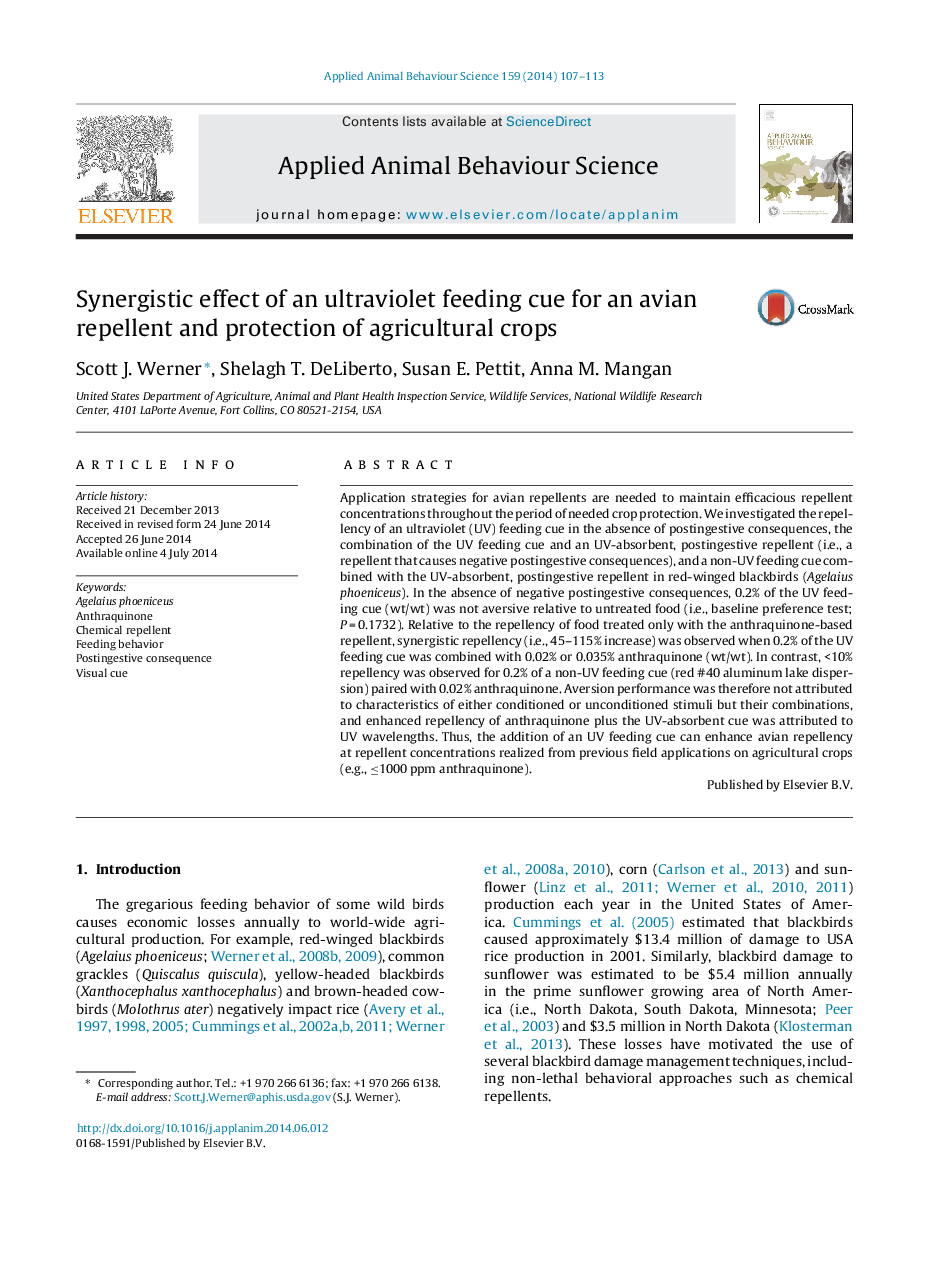| Article ID | Journal | Published Year | Pages | File Type |
|---|---|---|---|---|
| 6379658 | Applied Animal Behaviour Science | 2014 | 7 Pages |
â¢Behavioral assays revealed synergistic repellency from an ultraviolet feeding cue.â¢Little repellency manifest from a non-UV cue paired with the UV-absorbent repellent.â¢Synergistic repellency was attributed to UV wavelengths and has practical implications.â¢The UV cue enhanced repellency at concentrations realized on agricultural crops.
Application strategies for avian repellents are needed to maintain efficacious repellent concentrations throughout the period of needed crop protection. We investigated the repellency of an ultraviolet (UV) feeding cue in the absence of postingestive consequences, the combination of the UV feeding cue and an UV-absorbent, postingestive repellent (i.e., a repellent that causes negative postingestive consequences), and a non-UV feeding cue combined with the UV-absorbent, postingestive repellent in red-winged blackbirds (Agelaius phoeniceus). In the absence of negative postingestive consequences, 0.2% of the UV feeding cue (wt/wt) was not aversive relative to untreated food (i.e., baseline preference test; P = 0.1732). Relative to the repellency of food treated only with the anthraquinone-based repellent, synergistic repellency (i.e., 45-115% increase) was observed when 0.2% of the UV feeding cue was combined with 0.02% or 0.035% anthraquinone (wt/wt). In contrast, <10% repellency was observed for 0.2% of a non-UV feeding cue (red #40 aluminum lake dispersion) paired with 0.02% anthraquinone. Aversion performance was therefore not attributed to characteristics of either conditioned or unconditioned stimuli but their combinations, and enhanced repellency of anthraquinone plus the UV-absorbent cue was attributed to UV wavelengths. Thus, the addition of an UV feeding cue can enhance avian repellency at repellent concentrations realized from previous field applications on agricultural crops (e.g., â¤1000 ppm anthraquinone).
